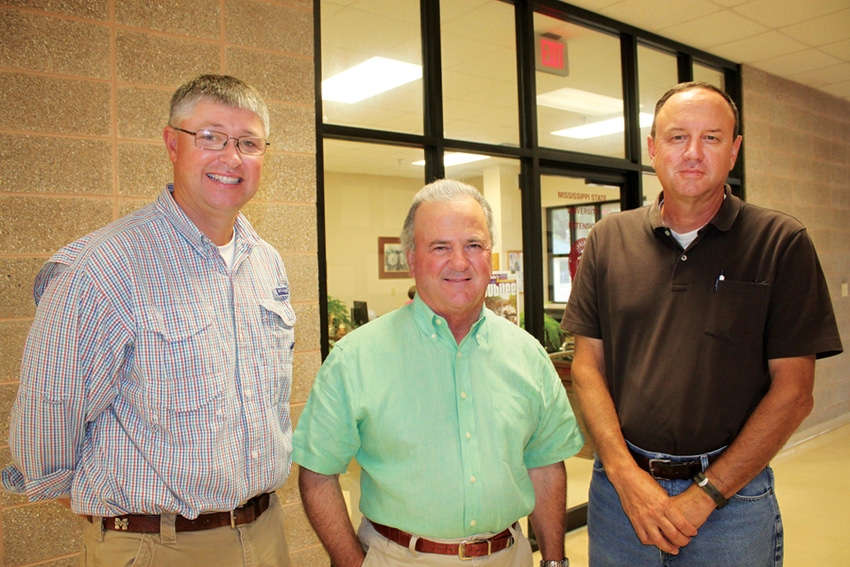
The good news continues for Mississippi cotton producers: No boll weevils were trapped in 2013, and the state is now in its sixth year of freedom from the pest that that ravaged the nation’s cotton crops for more than a century.
Except for the Rio Grande Valley area of south Texas and an adjacent area across the Rio Grande River in Mexico, the weevil has been officially eradicated across the cotton belt.
It is estimated that yield losses and control costs for the decades-long battle against the pest amounted to more than $23 billion. At one time, more than 40 percent of all insecticides used in agriculture were applied to cotton; many growers sprayed as many as 15 times during a season and still sustained heavy losses.
Get the latest ag news delivered to your inbox: Subscribe to Delta Farm Press Daily
In 1977, a pilot boll weevil eradication project was successfully conducted in south Mississippi, paving the way for a full eradication program. A coordinated large scale effort in Virginia and North Carolina in 1979 further demonstrated that eradication could work, and the program subsequently spread to other states.
The beltwide eradication program, which has cost hundreds of millions of dollars, has been a cooperative effort between the USDA and state officials. Assessments levied on cotton growers have paid 70 percent of the cost, with APHIS paying the remaining 30 percent. In some areas, state contributions helped offset grower costs.
“The success of this program is a tribute to the cooperation, determination, and dedication of everyone involved in the U.S. cotton industry,” says Farrell Boyd, director of the Mississippi Boll Weevil Management Corporation, who provided a post-eradication update at the organization’s annual joint meeting with the Mississippi Farm Bureau Federation Cotton Policy Committee.
Mississippi producers have planted an estimated 400,000 acres of cotton this year, a substantial increase from last year’s historically low 280,000 acres. “Also, we have cotton in three counties — Wayne, Hancock, and Harrison — where it hasn’t been grown in a very long time,” Boyd says.
Monitoring program ongoing statewide

THE BOLL WEEVIL, which cost U.S. cotton growers an estimated $23 billion, has been eradicated in most of the cotton belt.
“2008 was the last year we caught a boll weevil in Mississippi. But we’re certainly not complacent. We’re continuing to monitor pheromone traps to make sure if any weevils are transported into the state on equipment, or blown into the state by storms, that we can immediately detect them and take action to prevent reinfestation. We have a trap within a half-mile radius of every cotton field in the state, and we’re checking and servicing them every three weeks.”
“We’re working very closely with John Campbell and the Mississippi Bureau of Plant Industry to monitor equipment moving into the state from the south Texas area, custom harvesters, etc. Normally, this equipment comes in certified as clean, but occasionally something slips through, and we ask growers to be alert to this potential and to let us know of any equipment moving back into the state that needs to be checked and cleaned properly.”

Mid-South Cotton Production Guide
This exclusive Delta-region Cotton Production Guide features the most relevant tips and info from our famed Delta Agricultural Digest.
For the entire cotton belt, the only non-eradicated areas are in south Texas and across the river in Mexico. This year, there are about 146,000 acres of cotton in Texas’ Rio Grande Valley and about 9,000 across the river in Mexico. “This is where we’re most concerned about possible reinfestation,” Boyd says.
Both areas are “making significant progress toward eradication. I visited eradication leaders and growers in the Rio Grande Valley recently, and also met with Mexican growers and entomologists, and I left there encouraged that they’re going to achieve eradication. They’ve got a good handle on it.”
Volunteer cotton a problem
But challenges remain, he says. “Along the Rio Grande River, we visited an abandoned orange grove — it was like being in a jungle, vines, all kinds of vegetation, cotton that had washed in or had been abandoned there. That’s the kind of places weevils are occurring, primarily on volunteer or wild cotton. It’s very challenging to find the cotton in overgrown acres such as that.
“Volunteer cotton is growing in every crop they produce there; if the land has ever been planted in cotton, in that sub-tropical climate, it just continues to grow, or come up from seed.
“We looked at one wild cotton plant they’d found, a huge plant, more than head high, with many branches, that had over 100 infested squares. They know of six areas where there are plants like that. They’re continuing to search these areas, and as they find these plants they will be able to take action in dealing with them and with any weevils they find.”
Weevils are being trapped “in very low numbers,” Boyd says. “They’ve caught about 670 in the Rio Grande Valley this year, mostly in a very defined area next to the river bordering Mexico.”
The National Cotton Council, working through its Boll Weevil Action Committee, began action a couple of years ago, he says, to implement a national buffer zone along the Texas/Mexico border. It was felt that would be the area mostly likely to be infiltrated by weevils.
To support the buffer zone, a boll weevil protection fund has been established, and all cotton belt states are supporting it. “We hope this buffer zone, which will begin operation this year, will deter, if not totally prevent, movement into the U.S.,” Boyd says, “although there will continue to be danger of weevils being blown in by hurricanes or severe windstorms.
About the Author(s)
You May Also Like




